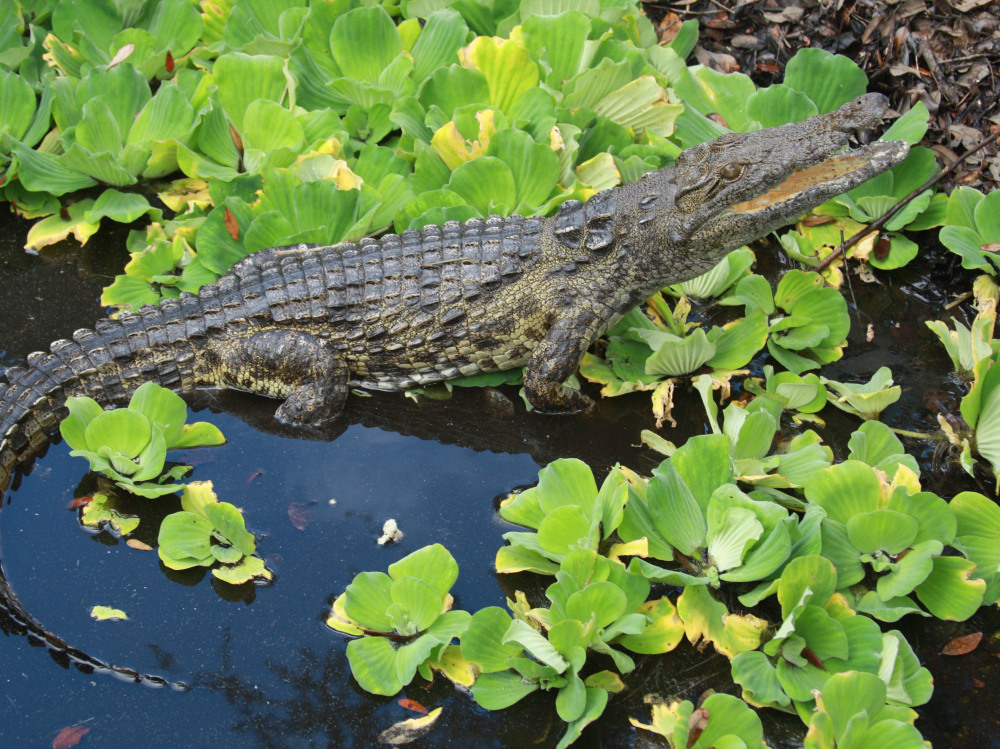It’s a small problem, but invasive species almost always start out that way.
Researchers at the University of Florida examined the DNA of three reptiles pulled out of the Everglades swamp and found that they were invasive Nile crocodiles, and that they were probably related.
Here’s what worries scientists: Like other species humans have dumped in South Florida – Burmese pythons, Argentine tegus, Nile monitors, Cuban tree frogs – the Nile croc can thrive there. It’s the perfect environment. The crocs were caught between 2000 and 2014, and their diet and growth were studied. One escaped a zoo and survived for years, proving they can adapt, Kenneth Krysko, herpetology collections manager at the Florida Museum of Natural History on the university’s campus, said in a statement.
And, he said, there are probably more.
“The odds that the few of us who study Florida reptiles have found all of the Nile crocs out there is probably unlikely,” said Krysko. “We know that they can survive in the Florida wilderness for numerous years, we know that they grow quickly here and we know their behavior in their native range, and there is no reason to suggest that would change here in Florida.”
SOME OFFICIALS LESS CONCERNED
But officials at the Florida Wildlife Conservation Commission aren’t as concerned. After the capture of the three crocs, they believe all the beast are accounted for. “There are no other confirmed sightings of Nile crocodiles in the wild in Florida and no captive animals that are unaccounted for,” said Robert Klepper, a spokesman for the agency.
“FWC officers conduct routine inspections … as well,” he said. “Regular surveys are conducted along many of South Florida’s levee systems to detect these and other exotic species.”
Klepper said the incident that led to the university study is 2 years old and no wild crocs have been spotted since then. He said these animals escaped a facility – Predator World – and went rogue, so no one released baby Nile crocs into the Everglades. “We’re confident this won’t be a problem,” he said.
Still, there’s an obvious question. Did they mate with native Florida alligators during their years in the wild? “It is unlikely,” Klepper said. “We are unaware of any successful hybridization between Nile and American Crocs.” But aren’t the reptiles cousins? “It is highly improbable that this croc would mate with the wild native crocodile because of dissimilar habitat and behavior,” Klepper answered.
It’s true that there are as many differences as there are similarities. Crocs are a relative of the gator – a bigger, meaner relative. They grow fast, attack when provoked, and are known to pull humans from river banks in Africa.
“Nile crocodiles were responsible for at least 480 attacks on people and 123 fatalities in Africa between 2010 and 2014,” according to a statement on the museum’s website. “They are generalist predators and eat a wide variety of prey. In Florida, everything from native birds, fish and mammals to the state’s native crocodile and alligator would be fair game for the carnivorous croc.”
ABLE TO TAKE DOWN BRAWNY PREY
They can take down brawny adult zebras and even a small hippopotamus. Have you seen those television nature shows, where wildebeest cross rivers in herds on the African plain? There’s always a dramatic moment when the heads of crocodiles pop up, eyeing them like tourists lined up at a Disney World buffet. They make easy meals of dozens.
Whether crocodiles have been eradicated from the Everglades or are here to stay, Florida doesn’t need another headache from an invasive species. The state is being overrun by animals, insects and plants that should not be there, costing Floridians half a billion dollars each year in everything from damaged orange groves to maimed pets to dead fish in waters where foreign plants have depleted the oxygen.
Florida spends $50 million a year just to eradicate invasive weeds from fields, pastures and canals. And still the problem is getting worse.
Researchers traveled nearly 40,000 miles over 11 years, observing wildlife in the southern area. They found that 99 percent of raccoons, 98 percent of opossums and about 88 percent of bobcats were gone. Marsh and cottontail rabbits, as well as foxes, could not be found.
The start of the disappearances coincide with the emergence of pythons in the region.
“My hope as a biologist is that the introduction of Nile crocodiles in Florida opens everyone’s eyes to the problem of invasive species that we have here in our state,” Krysko said. “Now here’s another one, but this time it isn’t just a tiny house gecko from Africa.”
Send questions/comments to the editors.



Success. Please wait for the page to reload. If the page does not reload within 5 seconds, please refresh the page.
Enter your email and password to access comments.
Hi, to comment on stories you must . This profile is in addition to your subscription and website login.
Already have a commenting profile? .
Invalid username/password.
Please check your email to confirm and complete your registration.
Only subscribers are eligible to post comments. Please subscribe or login first for digital access. Here’s why.
Use the form below to reset your password. When you've submitted your account email, we will send an email with a reset code.